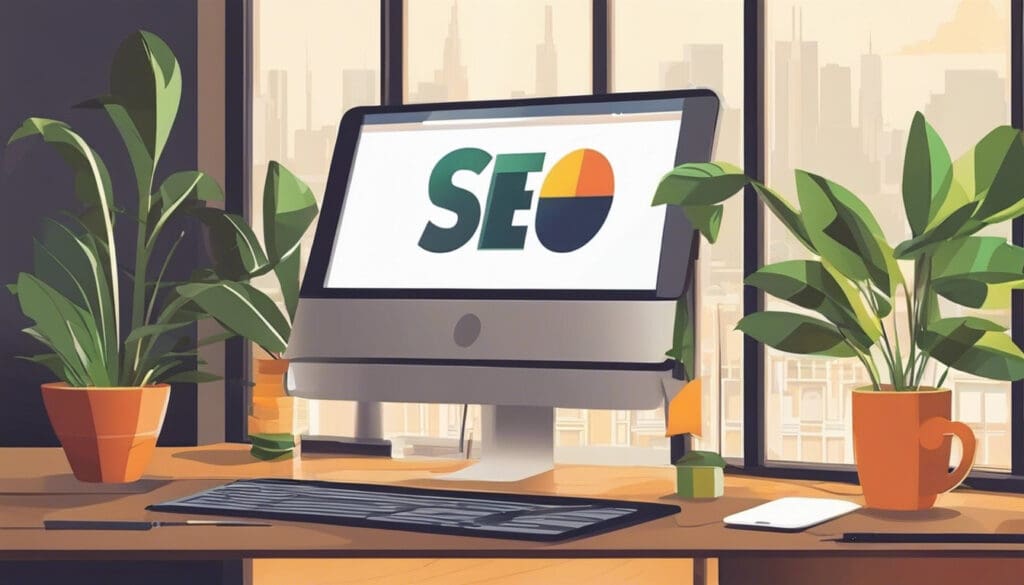Have you ever thought about how open your website is to people with disabilities? SEO accessibility isn’t just about moving up in search engine rankings; it’s ensuring that your site is available to all, no matter their abilities. Shockingly, a study reveals that 70% of websites have big issues with accessibility, potentially leaving out millions of users. This isn’t simply an oversight of a key user group; it could also mean you’re not meeting the ADA standards for SEO.
In this article, we’ll cover five key ways to enhance your SEO accessibility. We’ll go from following web accessibility rules to creating content that includes everyone, giving you practical steps to make your website friendly to all users. Mastering these methods could make the difference between touching a broader audience and unintentionally pushing potential customers away.
Are you eager to make your website more inviting to all? Continue reading for valuable tips to lift your online presence.
Understanding SEO Accessibility
Defining SEO Accessibility
SEO accessibility means fine-tuning your site to be user-friendly for search engines and people with disabilities alike. We aim to design a place online where content is easy to find, read, and navigate for everyone, whatever their physical or mental challenges. Better SEO accessibility invites a wider audience, which can also help increase search engine placement.
The Intersection of SEO and Web Accessibility
SEO and web accessibility goals greatly overlap, since both strive to improve user experience. A website that’s easy for support technologies to understand is also structured well for search engines to scan and index. Thus, a good grasp of web accessibility guidelines can really enhance your SEO approach.

Inclusive Content Strategy for Better SEO Accessibility
Creating Content That Speaks to Everyone
A content strategy that considers everyone is crucial for SEO accessibility. From the start, think about various users and make your content engaging and easy to get to. For example, alternate text for pictures lets those using screen readers get the full meaning, which boosts the SEO benefits of web accessibility.
Optimizing for Screen Readers and Assistive Technologies
To boost SEO accessibility, your content needs to work well with screen readers and other assistive tools. This involves using clear headings, links that describe where they go, and ARIA labels. Doing this helps users and search engine bots, which leads to making your website accessible for SEO.
Writing Clear and Simple Language
Using simple and straightforward language helps SEO accessibility. Short sentences and easy words make your content clearer and more enjoyable for a broader group, including those with learning disabilities.
Navigating Web Accessibility Guidelines
Breaking Down the WCAG for SEO
The Web Content Accessibility Guidelines (WCAG) are tips for creating accessible web content. They also play a big part in mixing SEO with accessibility. Follow the WCAG to build a solid base for SEO accessibility.
Key Principles of Accessible Web Design
The WCAG lays out four main ideas: perceivable, operable, understandable, and robust. Sticking to these ensures your site is open to all, which supports your SEO by making the user experience better and the site easier to use.

Improving Site Structure for Enhanced Accessibility
Logical Information Hierarchy and Navigation
A clear site layout is key for SEO accessibility. This includes a sensible setup of information and user-friendly navigation, letting users find what they want quickly. An easy-to-use site tells search engines your site is all about the user, which is good for your SEO rank.
The Role of Semantic HTML in SEO Accessibility
Semantic HTML means using the right tags and features to show meaning and organization. It helps support technologies understand page content, and it’s just as crucial for search engines. This means both ease of use and SEO accessibility benefit.
Ensuring Mobile Responsiveness
With more people using mobiles, having a site that responds well to different screens is a critical part of SEO accessibility. A mobile-ready site offers a better experience for those with disabilities, especially those who use touch-based aids, and it’s good for your site’s SEO.
ADA Compliance: Beyond the Basics
The Importance of ADA Compliance for SEO
Following the Americans with Disabilities Act (ADA) standards assists people with disabilities and adds to your site’s SEO. Search engines favor sites that are very usable, and ADA compliance SEO is a step toward this goal.
Advanced Techniques for ADA-Compliant SEO
Better ADA-compliant SEO includes frequent checks and updates. Using text for audio and video, creating keyboard navigation, and ensuring all interactive parts are reachable are just some examples of advanced strategies.
Auditing Your Site for SEO Accessibility and ADA Compliance
Regular audits for SEO accessibility and ADA compliance can spot and fix potential issues. Use tools and lists based on the WCAG to help you make sure you’re giving all users a good experience and collecting the SEO perks of web accessibility.

Unlock the Full Potential of SEO Accessibility
By now, you’ve gained some helpful knowledge on raising your SEO accessibility, shaping content to include everyone, and keeping up with accessibility rules. This goes beyond just ticking off a checklist; it’s about opening the digital doors wide to everyone, promising equal chances for all. Remember, adhering to ADA in SEO isn’t just following guidelines; it’s a proactive step toward making the online space more welcoming for everyone.
Keen to put these methods to work? Begin by looking over your site with the accessibility rules in mind and plan how to weave inclusive content into your usual SEO tasks. Then, spread the word about making the web friendlier by talking about your efforts with others. Every move counts, and maybe you’ll inspire someone else to embrace inclusivity too. Kick off a chat in the comments or share this piece with your network. Together, let’s build a web that’s good for everyone.







